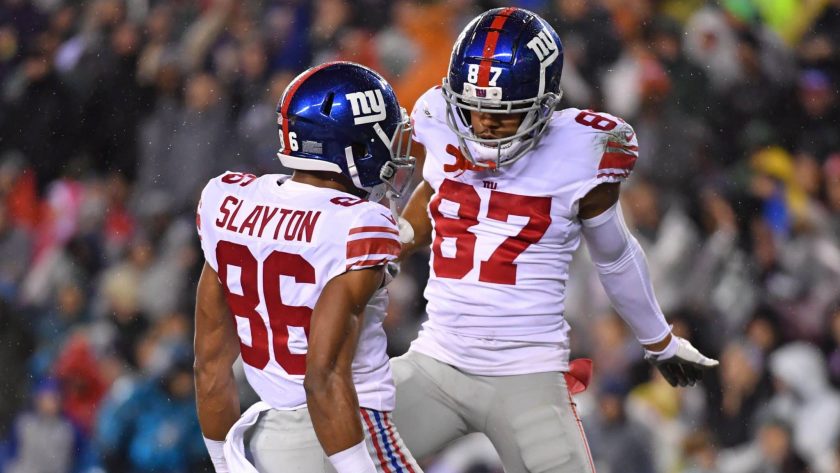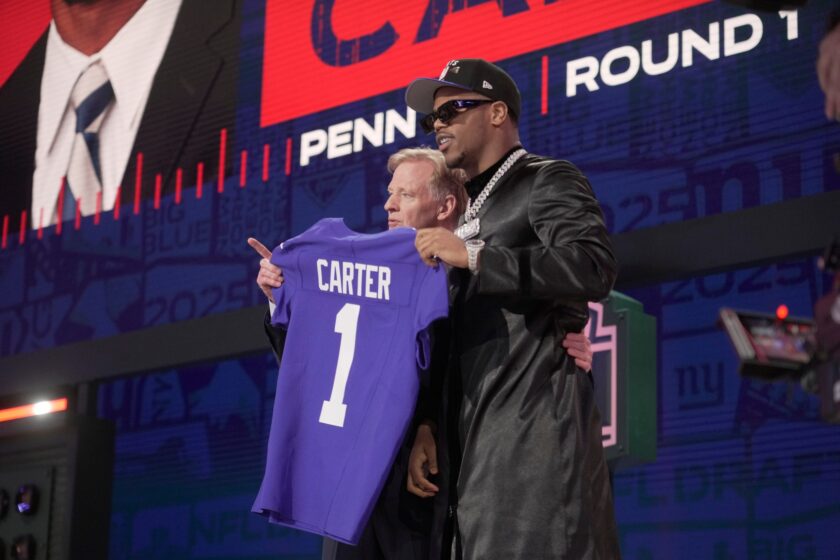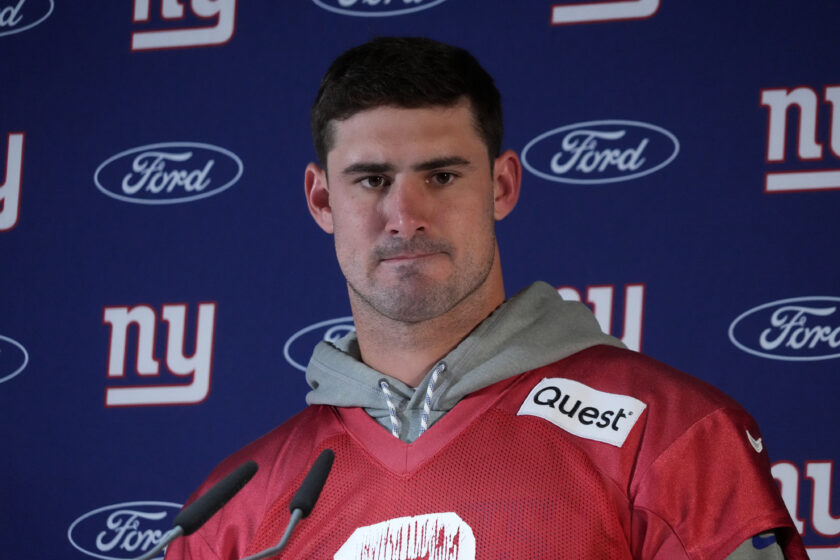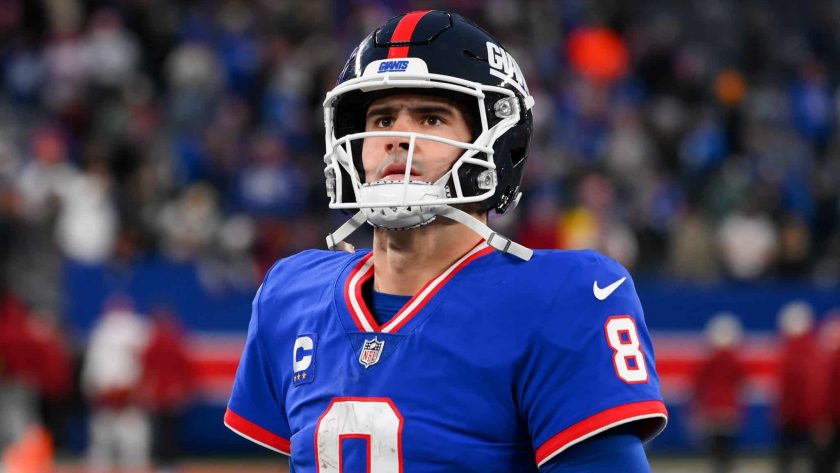The Giants still have big questions at WR

The Giants have a number of options to work with at wide receiver. But there are still some decisions to make.
[sc name=”ryan-honey-banner” ][/sc]There are various weapons in the New York Giants receiver room ahead of the 2021 campaign.
This is a wildly different scenario than the one that presented itself last season.
There was a lack of consistently reliable bodies for New York in 2020. The issues regarding the unit included the absence of a No. 1-caliber wideout, a notable factor that played a role in Daniel Jones‘ slow development.
But following offseason moves via free agency and the draft, the Giants are now expected to constantly produce through the air, just as long as Jones is careful with the football and the offensive line holds up.
That doesn’t mean there aren’t some question marks in regard to the overall group though.
No. 1 and 2 spots might be set
Before we get into any of the existing concerns, let’s discuss what basically could be established among this unit.
It’s very clear Kenny Golladay will be the team’s top target in the passing game.
And why wouldn’t he be?
He’s the most talented option, and given his efforts for a number of years in Detroit, we understand what the team could get out of him.
Not to mention, the Giants made a noteworthy investment in him; Kenny joined Big Blue by the way of a lucrative four-year, $72 million contract signed in March.
He was brought in to fix the issues previously introduced by the lack of a No. 1 target and the Giants fully expect him to assume the significant role — I don’t think there’s an argument to that notion.
As for the No. 2 spot, it’s not fully confirmed, but it may be safe to say rookie first-rounder Kadarius Toney fulfills the role.
The Giants additionally made a crucial investment in the young receiver, taking him with their No. 20 overall pick after trading back in the draft’s opening round. They like his speed, elusiveness, and versatility, and Toney could certainly be an Odell Beckham Jr.-type receiver in the slot.
Importantly, the former Florida Gator is slated to be another talented target that will assist in Jones’ on-field improvement.
Sterling Shepard or Darius Slayton at WR3?
A lot can change in one offseason.
Last year, you could’ve made the argument Sterling Shepard was atop the depth chart (when healthy) with Darius Slayton being the second-best option at receiver. Or, some opinions may have been vice versa.
However, following the moves to acquire Golladay and Toney, Shepard and Slayton may now be in the No. 3 and 4 spots (respectively or not).
But as for the WR3 role’s main occupant, you could look at it from two perspectives.
For one, there are remarkably different financial investments being made in Shepard and Slayton.
Following the 2019 trade of Odell Beckham Jr., the Giants signed Shepard to an extension (in the first offseason he was eligible for one) that could keep him in East Rutherford through 2023. It was a four-year extension worth $41 million that will lead to a 2021 cap hit of $9 million (fifth-highest on the team behind James Bradberry, Leonard Williams, Saquon Barkley, and Nate Solder).
This doesn’t even compare to the financial investment currently being made in Slayton, who’s entering his third season. The 2019 fifth-round draft pick will carry a 2021 cap hit just under $908,500 (51st-highest on the team).
But you could additionally look at it from a playing-time standpoint.
Shepard averaged 46.75 offensive snaps per game through the 12 matchups he partook in last year. Slayton, on the other hand, averaged 54.8 offensive snaps per game through 16 matchups. This could prove that coordinator Jason Garrett values Darius in the offensive game plans more than he does Sterling.
The competition for the WR3 role may be one of the more intriguing position battles of Giants training camp.
Where does John Ross stand?
The Giants acquired John Ross on a one-year, $2.25 million deal this offseason.
He’s not as talented as Kenny Golladay and isn’t expected to be as productive as Kadarius Toney. He also doesn’t possess the experience within Jason Garrett’s system that Shepard and Slayton do.
Thus, Ross may not take on the role of a No. 3 receiver, but he still should be notably involved on obvious passing downs.
Ross’ upside is evident. The 2017 first-round pick of the Bengals has eye-popping speed — he set the 40-yard dash record (4.22 seconds) at the 2017 NFL Scouting Combine.
If the Giants need a downfield threat, Ross is certainly an option.
There are two concerns though — the availability (or lack thereof) and the case of the drops.
In four years with Cincinnati, Ross played in 27 out of a possible 64 regular-season matchups, including in just three last year.
Through 13 games in 2018, Ross dropped seven balls on 58 targets for a drop rate of 12.1%. The following year (eight games), he recorded eight drops on 56 targets for a drop rate of 14.3%.
He’s not a perfect player by any measure, but that doesn’t mean he can’t be a factor in this Giants air attack if provided the right on-field situation.
- DRAFTKINGS SPORTSBOOK
BET $5 & GET $150 IN BONUS BETS INSTANTLY!
- FANDUEL SPORTSBOOK
BET $5, GET $150 BONUS!
- CAESARS SPORTSBOOK
$1,000 BET ON CAESARS!
- BETMGM SPORTSBOOK
BET $5, GET $158 BONUS!
- BET365
GET $150 BONUS OR $2,000 FIRST-BET SAFETY NET!











